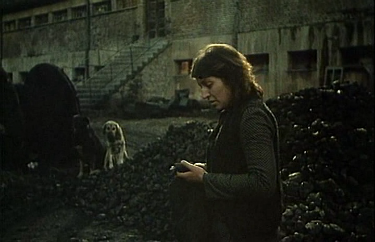Cinematic Identities... GENDERED GAZE
|
After the sporadic film productions between the two World Wars on the territories belonging to Socialist Federal Republic of Yugoslavia from 1945 to 1991, centralised production characterised the period until 1965, when the economic reform de-centralised film production and moved it to the republic level. This reform coincides with the emergence of 'black film', a phrase more adequately applied to a series of film scandals occurring on the axis of film – state apparatus, than truly permanently forbidden works. 1967 can be called the triumph of Yugoslav film, marking the beginning of 'Yugoslav national film school', but also the introduction of structuralist approach in film criticism, which replaced a more impressionist trend theretofore. Many film-makers and critics, however, agree that the period 1960-1969 represents a turning point in Yugoslav film history, marking the emergence of new film5. Most of these critics also agree that "the heretofore stable patriarchal world begins to disintegrate with new film6". The new wave of Yugoslav films became, therefore, synonymous with modernity, more in an aesthetic than historical sense given to this phrase in Yugoslav film circles. However, in spite of this (partial) visual subversion, it represented a supplement to the mainstream national cinematic discourse, rather than an example of counter-cinema. Whereas in France, the emergence of nouvelle vague was preceded by a new generation of public discourse, inclusive of women7, such was not the case in Yugoslavia. The new film generation was a complete male phenomenon, with the exception of Soja Jovanović8. Female idols, both as film authors or as fictional characters, therefore, did not seem to exist or were rare, in comparison to great numbers of male heroes, both on the screen and behind the cameras. Yugoslav auteur film approaches socio-national themes in a highly gendered mode, contrary to earlier propagandist films which systematically effaced gender for the sake of class (communist, patriarchal) struggle. If Yugoslav women are not presented as a new personification of the 'eternal feminine' or fetishized femmes fatales for the masculine hero, they frequently convey the alienation of mass culture, are members of a higher class reflecting the film-maker's obsession with a high-class woman (e.g. Morning, Sand Castle, Rondo, R. Grlic's and L. Zafranovic's films etc.); come from a foreign, preferably Western country, representing the desired other and imaginary route of escape (S. Karanovic's, M. Radivojevic's, and later Z. Nikolic's films); or come from low, marginal social layers (Z. Pavlovic's and most so-called black wave works, but also G. Paskaljevic's, G. Markovic's films etc.). The female character is re-located to the traditional place destined for women not as the subject of narrative or discourse, but as the object of love and/or hatred by a masculine subject. Women are symbolic victims of misogyny or are literally imprisoned and physically confined. The female body is infantilised, humilated, raped, beaten and dead, or maternalised. The rare free femininity is usually punished by a collective male institutional order of patriarchal forces. Woman is, further, portrayed similarly to a by-stander, an accidental prop on man's path to (no) self-awakening or its side-effect, as in so-called intimate film. The tragic destiny of an autonomous hero in such film is the result of a love relationship with a woman, who attracts his attention in the typically expressed heterosexual desire. |
In sum, women are portrayed as derogatory, greedy consumerists, or sick, physically disabled human beings, marginalised, frightening or threatening, infantilised and gender-neutralised in the name of the collective socialist purpose, semi-emancipated seductresses or emotional wrecks. |
----------------------------------
5 Munitic, 1967; Novakovic, 1967
6 Novakovic, 1967: 49
7 E.g. the appearance of Françoise Sagan's Bonjour Tristesse in 1954, then aged only 18, and of the phenomenon B.B. after the release of Et Dieu créa la femme in 1956, as well as Sylvie Vartan and Francoise Hardy's songs (Sellier, 2005: 13)
8 Jovanovic is the first woman director and the first director to make a colour film in Yugoslavia (1957), but the contribution of her filmmaking, however notable, yet mostly reliant on adaptations of renowned literary works (i.e. pre-existing art texts), does no resituate Yugoslav film in the category of visual arts, in the way similar to that made for French and world cinema by Agnes Varda, for example. The analysis of, in Spivak's (1987) terms, 'strategies of survival' that Jovanović was forced to employ as a woman in a predominantly male film production context and of her filmic representations, as well as exploring the question as to why there was such a prominent absence of female film-makers within this generation, described as 'modern', could constitute an enormous body of work to be researched in a separate film analysis.
9 Sellier, 2005: 5, my translation


